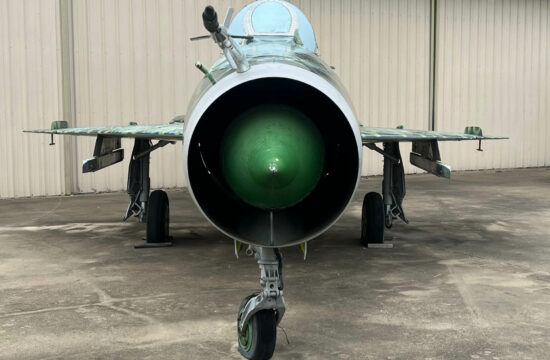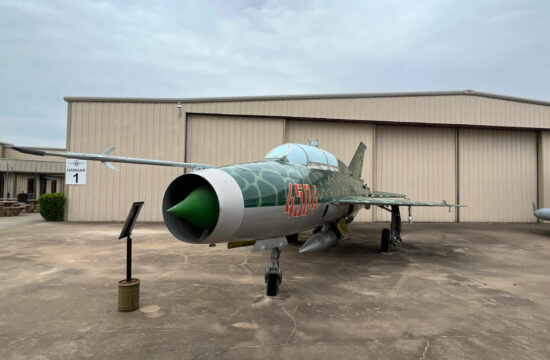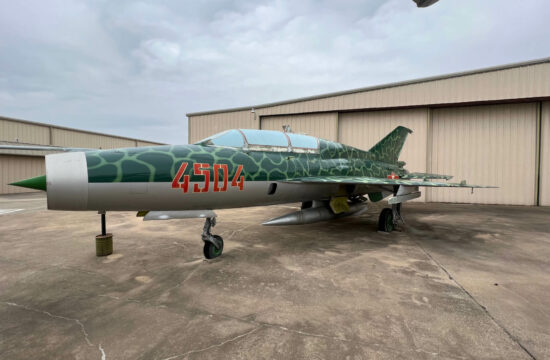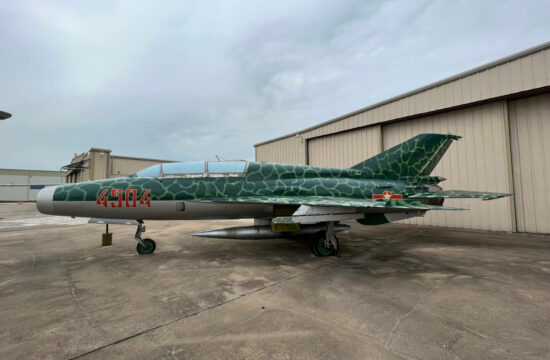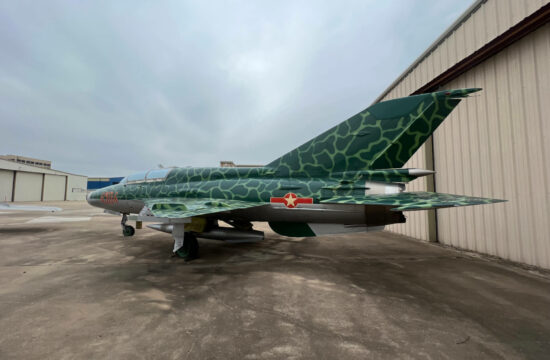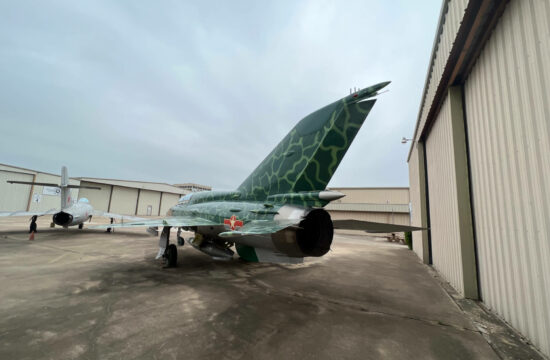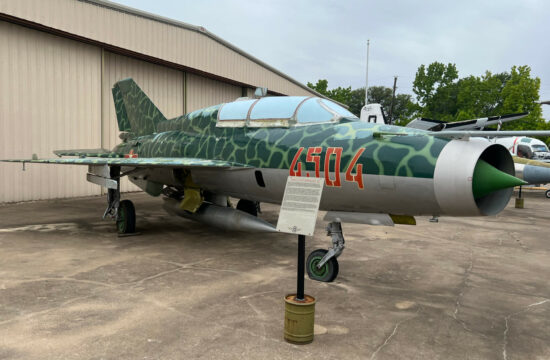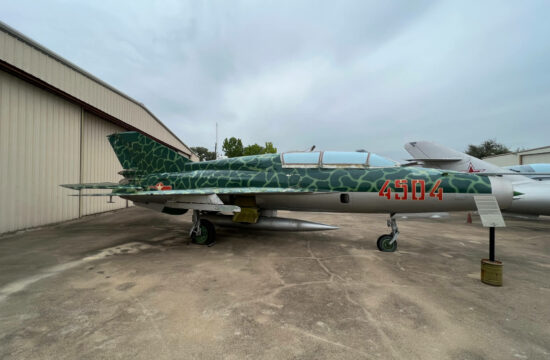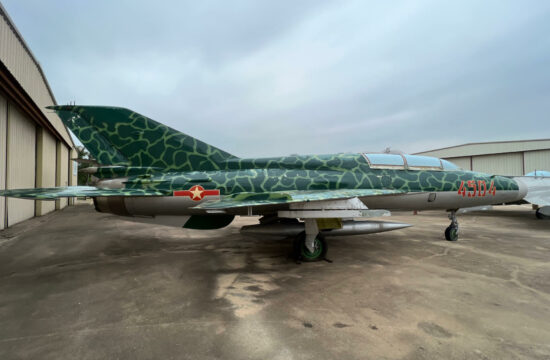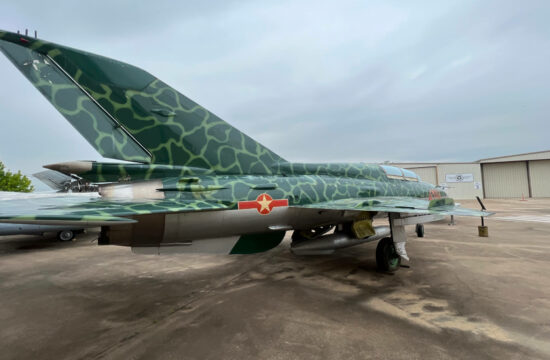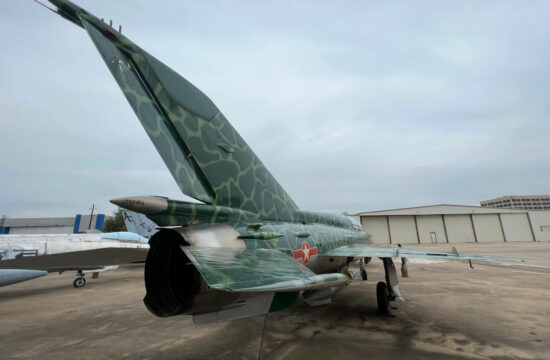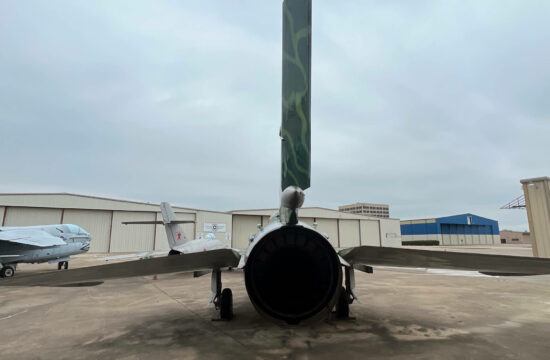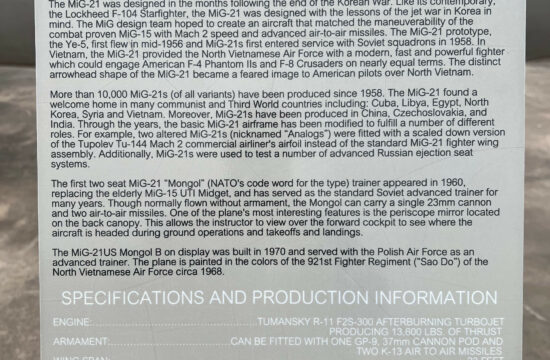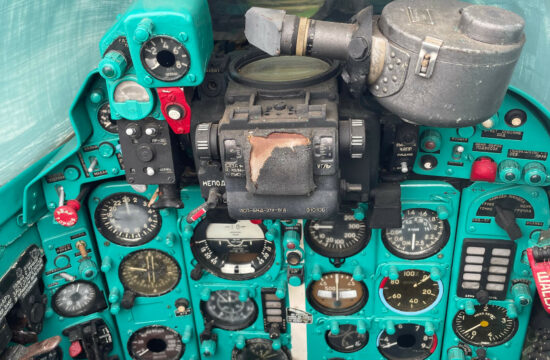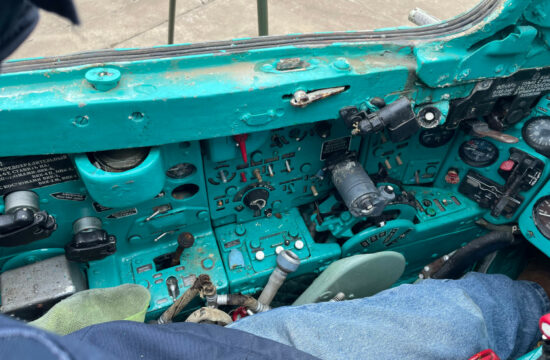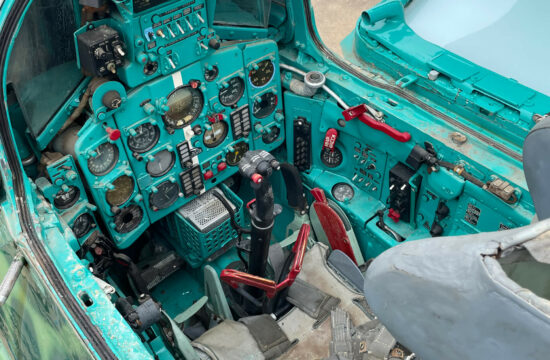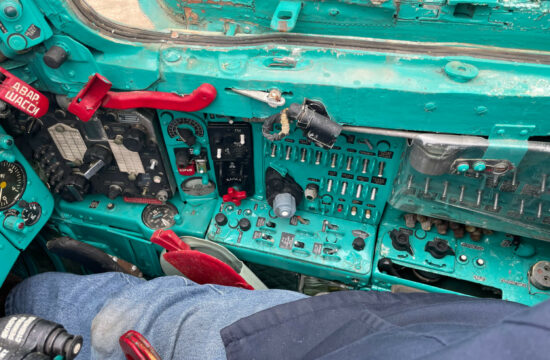s/n 4685145 Reg: N1121M // $50,000
s/n 4685145 Reg: N1121M
$50,000
1960 Mikoyan Guerevich MiG-21
Restored to Static Condition
Aircraft FAQ
Airframe
Engine(s)
Location
Additional Info
History
The MiG-21 was the first Soviet fighter capable of flying faster than twice the speed of sound. Its revolutionary delta wing design offered excellent handling characteristics, a high top speed and a respectable pay load. This potent combination of speed, agility and powerful armament made the MiG-21 one of the most successful fighters of the 1960s and 1970s. MiG-21s saw extensive combat action in such diverse conflicts as Vietnam, the Arab-Israeli Wars, the Iran-Iraq War, Afghanistan and Desert Storm.
The MiG-21 was designed in the months following the end of the Korean War. Like its contemporary, the Lockheed F-104 Starfighter, the MiG-21 was designed with the lessons of the jet war in Korea in mind. The MiG design team hoped to create an aircraft that matched the maneuverability of the combat proven MiG-15 with Mach 2 speed and advanced air-to-air missiles. The MiG-21 prototype, the Ye-5, first flew in mid-1956 and MiG-21s first entered service with Soviet squadrons in 1958. In Vietnam, the MiG-21 provided the North Vietnamese Air Force with a modern, fast and powerful fighter which could engage American F-4 Phantom IIs and F-8 Crusaders on nearly equal terms. The distinct arrowhead shape of the MiG-21 became a feared image to American pilots over North Vietnam.
More than 10,000 MiG-21s (of all variants) have been produced since 1958. The MiG-21 found a welcome home in many communist and Third World countries including: Cuba, Libya, Egypt, North Korea, Syria and Vietnam. Moreover, MiG-21s have been produced in China, Czechoslovakia, and India. Through the years, the basic MiG-21 airframe has been modified to fulfill a number of different roles. For example, two altered MiG-21s (nicknamed “Analogs”) were fitted with a scaled down version of the Tupolev Tu-144 Mach 2 commercial airliner’s airfoil instead of the standard MiG-21 fighter wing assembly. Additionally, MiG-21s were used to test a number of advanced Russian ejection seat systems.
The first two seat MiG-21 “Mongol” (NATO’s code word for the type) trainer appeared in 1960, replacing the MiG-15 UTI Midget, and has served as the standard Soviet advanced trainer for many years. Though normally flown without armament, the Mongol can carry a single 23mm cannon pod and two air-to-air missiles. One of the plane’s most interesting features is the periscope mirror located on the back canopy. This allows the instructor to view over the forward cockpit to see where the aircraft is headed during ground operations and takeoffs and landings. The MiG-21US Mongol B on display served with the Polish Air Force as an advanced trainer. It was added to the museum collection in 1993. The aircraft is painted in the colors of the 921st Fighter Regiment (“Sao Do”) of the North Vietnamese Air Force circa 1968.
Sales may be subject to local Sales Tax / V.A.T. / G.S.T.
Aircraft maybe subject to prior sale, lease, and/or removal from the market without prior notice.
Specifications subject to verification upon inspection.
Inquire Now
Like what you see? Fill out our convenient form today!

